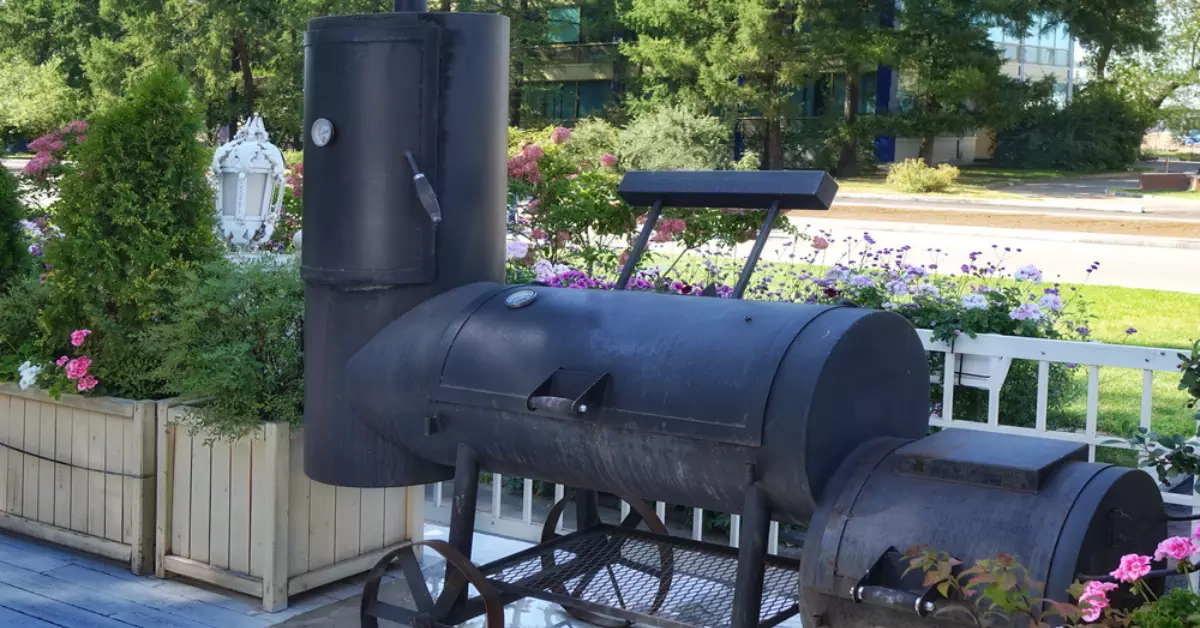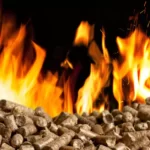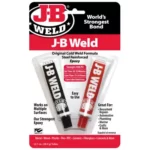There’s no denying the allure of food prepared in a smoker. The rich, tantalizing flavors and the aromas can transport one to culinary nirvana. However, as delectable as these slow-cooked meats can be, maintaining a smoker is vital for quality food and personal health. An issue often overlooked by smoker owners is mold growth – a silent saboteur that can drastically affect both the taste of your food and your health.
Mold in a smoker can be dangerous. It not only degrades the flavor and quality of the smoked food but also exposes users to potential health risks. Mold spores, when inhaled, can cause allergies, respiratory problems, and in severe cases, more serious health complications.
Moreover, mold in a smoker reflects poor maintenance and storage practices. It is crucial for smoker enthusiasts to have accurate information about mold development, recognition, prevention, and removal. Keeping your smoker mold-free ensures delicious food and a safer smoking environment.
What is Mold?
Definition and Characteristics of Mold
Mold is a type of fungus that thrives in moist environments. It reproduces through tiny, airborne spores that can survive harsh conditions. When these spores land on a suitable surface, they begin to grow and multiply. Mold can be found in different colors, including black, white, orange, green, and purple.
Common Types of Mold Found in Smokers
In the world of fungi, molds are highly diverse, comprising numerous species. Within the confines of your smoker, you might come across several types of mold that have taken residence.
Aspergillus: This genus of mold is frequently found in smokers and can appear in a wide range of colors. Certain species of Aspergillus can produce toxins called aflatoxins, which are hazardous if ingested or inhaled.
Penicillium: Recognized by its blue or green color, Penicillium is another common mold genus. While some species of Penicillium are used in cheese-making, others can lead to food spoilage and produce harmful toxins.
Cladosporium: This mold genus, often appearing in green, brown, or black color, can survive in warmer climates and is a frequent guest in poorly maintained smokers.
How Does Mold Develop in Smokers?
Understanding how mold finds its way into your smoker and creates an undesirable ecosystem is key to its prevention and removal.
Causes of Mold Growth in Smokers
Mold in smokers primarily develops due to a combination of moisture, warmth, and nutrient availability.
- Moisture: Water is essential for mold growth. It can come from various sources such as residual humidity from smoking or external environmental factors.
- Warmth: Smokers, by their nature, are warm environments. When not adequately cleaned and left in a moist state, these become perfect breeding grounds for mold.
- Nutrient Availability: Leftover food particles, grease, or even charred wood provide ample organic material for mold to thrive.
Environmental Conditions Promoting Mold Growth
The environmental conditions that promote mold growth are often summed up as the three “M’s”: moisture, material, and moderate temperatures.
- Moisture: Mold needs a constant moisture source. This could be from condensation, leaks, or high humidity.
- Material: Mold requires an organic material source to feed on. In a smoker, this could be residues of smoked food, grease, or even the wood or charcoal used as fuel.
- Moderate Temperatures: Most molds grow best at temperatures between 60 and 80 degrees Fahrenheit (15 and 27 degrees Celsius). However, some can grow in colder or hotter temperatures.
Health Implications of Mold in Smokers
Mold, particularly when inhaled or ingested, can lead to various health issues. The severity of these issues depends on the individual’s immune system and the type of mold they are exposed to.
Potential Health Risks Associated with Mold
The health risks associated with mold exposure can vary widely from person to person. Here are some common health implications:
- Allergies: Mold spores can trigger allergic reactions, causing symptoms like sneezing, runny nose, red eyes, and skin rashes.
- Respiratory Issues: In individuals with asthma or other respiratory conditions, inhaling mold spores can lead to more frequent and severe attacks.
- Mycotoxicosis: In severe cases, exposure to certain types of mold like Aspergillus, which produce potent toxins (mycotoxins), can lead to a condition called mycotoxicosis. This can result in symptoms like fatigue, nausea, headaches, and in extreme cases, even neurological issues or immune suppression.
Specific Dangers of Mold in Smokers
Mold poses specific dangers when it comes to smokers, not just to your health but also to the quality of your smoked food.
- Health Risks: When mold develops in a smoker, the spores can become airborne during the cooking process and inhaled, leading to the health issues mentioned above. Additionally, if the smoker is heavily infested with mold, there’s a risk that the food could become contaminated with mold spores, leading to potential ingestion of the spores.
- Food Quality: Mold growth in your smoker can negatively impact the taste and texture of your food. The presence of mold can introduce a musty, off taste to your smoked goods and can even alter the texture, making it unappetizing or unsafe to eat.
Preventing Mold Growth in Smokers
The key to keeping your smoker mold-free lies in its regular maintenance and proper storage. A few essential steps can make a significant difference in preventing mold growth.
Proper Cleaning After Use
Regular and thorough cleaning of your smoker is a critical step in mold prevention. Here are the steps to follow:
- Step 1 – Remove Residues: After using the smoker, make sure to remove any leftover food particles or grease. These can provide the nutrients needed for mold to grow.
- Step 2 – Cleaning: Use a suitable grill or smoker cleaner to clean all the internal parts of your smoker. Make sure to follow the manufacturer’s instructions when cleaning.
- Step 3 – Dry Thoroughly: Before storing the smoker, make sure it is completely dry. Any moisture left can be a starting point for mold growth.
Adequate Ventilation During Storage
While storing your smoker, ensure it’s adequately ventilated. This will help to avoid moisture build-up inside the smoker, thereby preventing mold growth.
Regular Maintenance and Checkups
Regular maintenance, including checking for mold growth, is vital, especially if you don’t use the smoker frequently. This can help catch any mold growth early before it becomes a more significant problem.
Removing Mold from Smokers
Despite our best efforts, sometimes mold can sneak its way into our smokers. When this happens, it’s crucial to remove the mold thoroughly and safely.
Safety Precautions When Cleaning Mold
When cleaning mold, it’s essential to take safety precautions to avoid mold spore inhalation or contact with skin.
- Wear Protective Gear: Wear gloves, goggles, and a mask to protect your skin, eyes, and respiratory system from mold exposure.
- Ensure Good Ventilation: Cleaning in a well-ventilated area can reduce the concentration of mold spores in the air, reducing the risk of inhalation.
Step-by-Step Guide to Cleaning Mold from Smokers
Follow this step-by-step guide to clean mold from your smoker safely and effectively.
- Preparation: Put on your protective gear and ensure you’re in a well-ventilated area.
- Initial Cleaning: Start by removing any loose mold using a grill brush. Be careful not to disperse the mold spores too much into the air.
- Deep Cleaning: Prepare a mixture of 1 part vinegar to 4 parts water. Use this solution to scrub the smoker’s interior surfaces thoroughly.
- Rinse and Dry: After cleaning, rinse the smoker thoroughly with water and let it dry completely.
- Fire It Up: Finally, heat your smoker to a high temperature for about 20 minutes to kill any remaining mold spores.
Frequently Asked Questions
What Types of Mold Are Most Common in Smokers?
The most common types of mold found in smokers include Aspergillus, Penicillium, and Cladosporium. These molds thrive in the warm, moist environments that can often be found inside poorly maintained smokers.
Can You Get Sick from Mold in Smokers?
Yes, exposure to mold from smokers can lead to various health issues, including allergies, respiratory issues, and in severe cases, mycotoxicosis. These health risks can arise from inhaling airborne mold spores during the cooking process or from ingesting food contaminated with mold.
How Often Should I Clean My Smoker to Prevent Mold Growth?
Ideally, you should clean your smoker after each use. This involves removing any food residues, cleaning the smoker with a suitable cleaner, and ensuring it is completely dry before storage. Regular checkups and maintenance can also help catch and prevent any mold growth.
Conclusion
Mold growth in smokers is an issue that needs timely attention due to its potential to cause health problems and compromise the quality of your smoked food. Understanding the types of mold commonly found in smokers, how they grow, and the health implications is crucial.
Preventing mold growth in smokers primarily involves regular cleaning, adequate ventilation during storage, and regular checkups. If mold growth is spotted, it’s important to remove it safely and thoroughly, following the right safety precautions and cleaning procedures.
By embracing these prevention and cleaning strategies, you can ensure your smoker stays mold-free, helping you enjoy the perfect smoked dishes without any unwanted health risks or impact on food quality.







